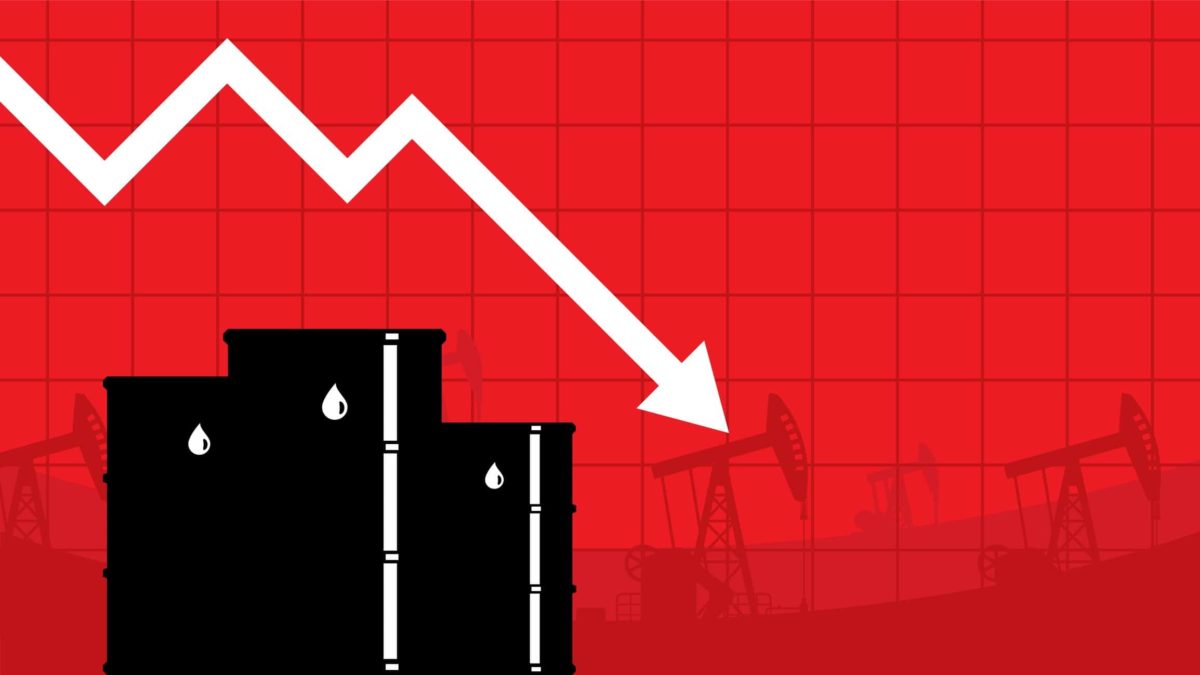The oil price took another sharp turn lower overnight, which as you might expect is pressuring S&P/ASX 200 Index (ASX: XJO) oil and gas stocks today.
While the ASX 200 is up 0.4% in afternoon trade today, the S&P/ASX 200 Energy Index (ASX: XEJ) is down 0.8%.
This comes after Brent crude plunged 4.8% overnight, tumbling from US$76.62 per barrel to US$72.92 per barrel. That sees Brent crude oil down 24.5% since 27 September, when that same barrel was fetching US$96.55.
It was a similar picture with West Texas Intermediate crude, which fell 3.8% to US$68.14 per barrel.
That sees the oil price plumbing new five-month lows today after declining for seven weeks running.
And investors have reacted by hitting the sell button on the big Aussie oil and gas stocks.
Here's how they're tracking today:
- Woodside Energy Group Ltd (ASX: WDS) shares are down 0.9%
- Santos Ltd (ASX: STO) shares are down 0.7%
- Beach Energy Ltd (ASX: BPT) shares are down 1.7%
So, what's happening with the oil price?
Why is the oil price in free fall?
Most of the pressure on the oil price comes from the supply side rather than demand.
Global oil demand is tracking at all-time highs in 2023. And the International Energy Agency (IEA) forecasts demand to increase yet again in 2024. Although concerns do remain that the United States may still slip into a recession while Chinese economic growth remains sluggish, both of which could drag on energy demand in the year ahead.
But it's really the supply side that's seeing the oil price tumble. And much of that surge in crude supplies is coming out of the US, which has taken over the mantel as the world's top oil producer.
The US is already pumping record levels of oil, and that's only expected to increase in 2024.
Which means the Organization of Petroleum Exporting Countries and its partners (OPEC+) have its work cut out for it, with the recent extension and increase in production cuts so far failing to prevent the sliding oil price.
In fact, OPEC+ may need to keep a lid on its own output for at least the next few years, according to Rapidan Energy Group.
"For the next several years, at least, continually unified, vigilant, and effective OPEC+ supply management will be required to prevent a collapse in oil prices," Rapidan said (courtesy of Bloomberg).
Atop the surging output from the US, Rapidan also points to growth from Brazil and Guyana as likely to see non-OPEC+ crude supplies increase by 700,000 barrels a day every year through to 2030.
According to Rapidan:
Soggy fundamentals will require effective OPEC+ supply management over the next five years to keep oil prices in an US$80 to US$100 range. We assume OPEC+ will successfully manage the market in the run-up to tighter conditions later this decade.
On a more positive note for ASX 200 energy shares like Woodside, Beach Energy and Santos – and a likely bitter pill for environmentalists – Rapidan doesn't buy into the notion that global oil demand will begin to retrace by 2030.
"The fashionable peak demand consensus is a mirage. The failure of demand to peak by 2030 will be the next big surprise to hit the market," Rapidan said.
For now, the falling oil price may not be good news to investors in ASX energy stocks, but it will certainly be welcomed by motorists over the Christmas holidays.









